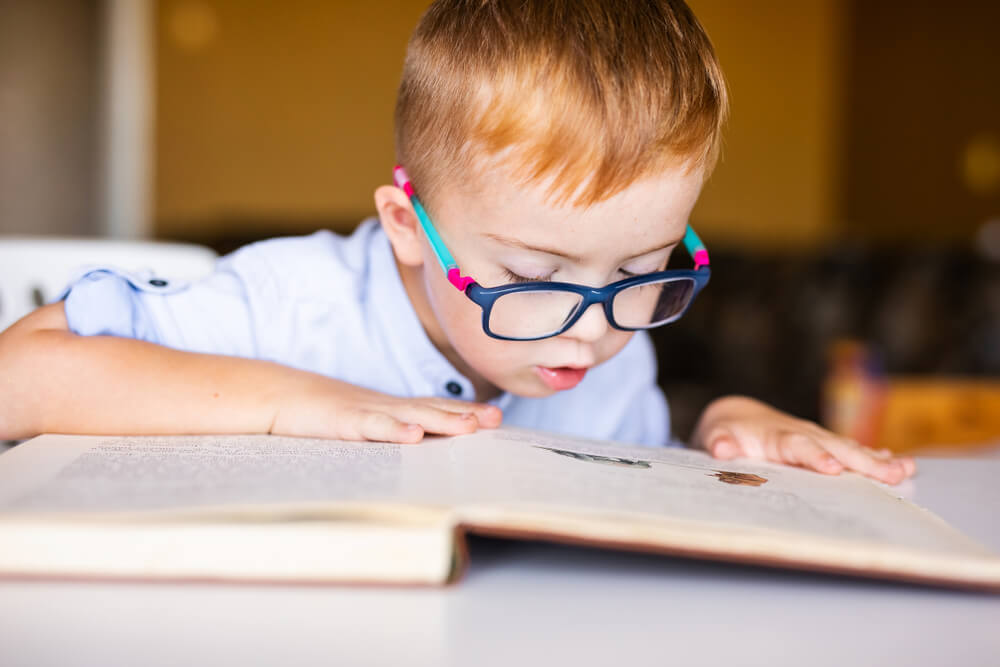As parents, ensuring the well-being of our children is paramount, and their vision plays a crucial role in their overall development. Identifying signs that your child needs glasses is a proactive step toward addressing potential vision issues early on.
In this comprehensive guide, compiled by the experts at Children’s Medical Center of South Florida, we will explore the subtle and not-so-subtle cues that may indicate your child is experiencing vision problems, offering insights into when toddlers might need glasses and shedding light on the broader topic of child vision.
Understanding Child Vision Development

Before delving into the signs that your child may need glasses, it’s essential to grasp the nuances of vision development in children. The journey from infancy to adolescence is marked by significant milestones, each contributing to the establishment of a clear and accurate vision. While many children develop healthy eyesight naturally, some may encounter challenges along the way.
Signs Your Child Needs Glasses
Squinting
One of the most noticeable signs that your child may need glasses is squinting. If your child frequently squints or closes one eye while reading, watching TV, or looking at distant objects, it may indicate an attempt to compensate for blurred vision.
Frequent Headaches
Children with undetected vision problems may experience frequent headaches. Straining to see clearly can lead to eye fatigue and tension, resulting in headaches, especially after activities that require visual concentration.
Holding Objects Close
If you observe your child holding books, tablets, or other objects unusually close to their face, it might suggest a need for glasses. This behavior may indicate an effort to bring objects into clearer focus.
Eye Rubbing
Persistent eye rubbing can be a telltale sign of discomfort or strain related to bad eyesight. While occasional eye rubbing is normal, frequent rubbing, especially during activities that require visual focus, should raise a concern.
Difficulty Concentrating
Children with vision issues may struggle to maintain concentration, particularly during activities that involve reading, writing, or other visual tasks. If your child exhibits signs of restlessness or frustration during such activities, it may be linked to challenges with their eyesight.
Tilting Head or Covering One Eye
An unusual head tilt or covering one eye while looking at objects may indicate an effort to see more clearly. Observing these behaviors regularly warrants further investigation into your child’s vision.
Lack of Interest in Reading or Drawing
Children with undetected vision problems may show reluctance or disinterest in activities that require close visual attention, such as reading or drawing. If your child avoids these activities, it may be a subconscious response to visual discomfort.
Poor Academic Performance
Struggling with academic tasks, especially those involving reading and writing, could be linked to vision problems. If your child’s academic performance declines unexpectedly, it’s essential to consider the possibility of underlying vision issues.
When Do Kids Need Glasses
The need for glasses in children can emerge at various stages of their development. While some vision problems may be present from an early age, others may become apparent as the demands on their eyesight increase. Here are some key milestones and considerations related to when kids may need glasses:
Infancy
Vision screenings are typically conducted during well-child check-ups in the first year of life. However, if you notice any signs of eye misalignment, excessive tearing, or persistent eye rubbing, it’s crucial to consult with a pediatrician or an eye care professional.
Preschool Years
Vision screenings become more comprehensive during the preschool years. If issues like strabismus (crossed or misaligned eyes) or amblyopia (lazy eye) are detected early, interventions such as glasses may be recommended to correct and support healthy visual development.
School-Age Years
As children enter school, the demands on their eyesight increase significantly. Regular eye exams become essential during these years to identify and address any emerging vision problems promptly. This is a crucial time to address issues like nearsightedness, farsightedness, and astigmatism.
Teenage Years
The teenage years bring further challenges to vision, especially with increased screen time and academic demands. Regular eye check-ups during adolescence help ensure that any changes in vision are addressed promptly and the appropriate corrective measures are taken.
Taking Action: What to Do If You Suspect Your Child Needs Glasses
Schedule a Comprehensive Eye Exam
If you observe any signs that your child may need glasses, schedule a comprehensive eye exam with an optometrist or ophthalmologist. A thorough examination will assess various aspects of your child’s vision and eye health. During the examination, the eye care professional will perform tests to evaluate refractive errors, eye muscle coordination, and the overall health of the eyes, providing a comprehensive understanding of your child’s visual needs. This comprehensive approach ensures that any potential vision issues are identified and addressed with precision, allowing for tailored interventions that support your child’s optimal eye health.
Discuss Observations with Teachers
Teachers play a crucial role in observing children’s behavior and performance in academic settings. If you notice signs of vision problems, discussing your observations with your child’s teachers can provide additional insights and support. Collaborating with educators fosters a holistic understanding of your child’s experiences in the classroom, allowing for a unified effort to address potential vision issues and enhance their overall learning environment. Open communication ensures that both home and school are working together to prioritize your child’s visual health and academic success.
Encourage Open Communication
Foster open communication with your child about their vision. Encourage them to express any discomfort, changes in vision, or difficulties they may be experiencing. A collaborative approach ensures that potential issues are addressed promptly.
Be Proactive with Screen Time Management
In today’s digital age, managing screen time is crucial for maintaining healthy eyesight. Encourage regular breaks, the 20-20-20 rule (looking 20 feet away for 20 seconds every 20 minutes), and proper lighting during screen use.
Promote Eye-Healthy Habits

Emphasize the importance of eye-healthy habits, including a balanced diet rich in eye-supporting nutrients, adequate hydration, and protection from excessive sun exposure.
Don’t Fear Bad Eyesight
Recognizing the signs that your child needs glasses is a proactive step toward ensuring their visual health and overall well-being. By staying attuned to subtle cues and being proactive with eye care, parents can address potential vision issues early on, paving the way for clear and comfortable eyesight throughout their child’s developmental journey. Regular eye check-ups, open communication, and a collaborative approach with teachers contribute to a comprehensive strategy for maintaining optimal child vision and fostering a lifelong appreciation for healthy eyesight.
That said, if you want to learn more or have any concerns, consider scheduling a well-child check with us so we can thoroughly examine your bundle of joy.


